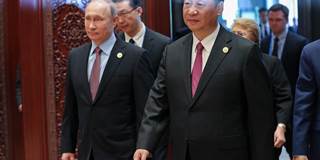
Xi Jinping’s Marco Polo Strategy
Last month, Chinese President Xi Jinping presided over a highly orchestrated forum for his Belt and Road Initiative, which will involve 65 countries containing some 4.5 billion people. Xi’s plan to integrate Eurasia through a trillion dollars of infrastructure investment is impressive, but will it succeed as a grand strategy?